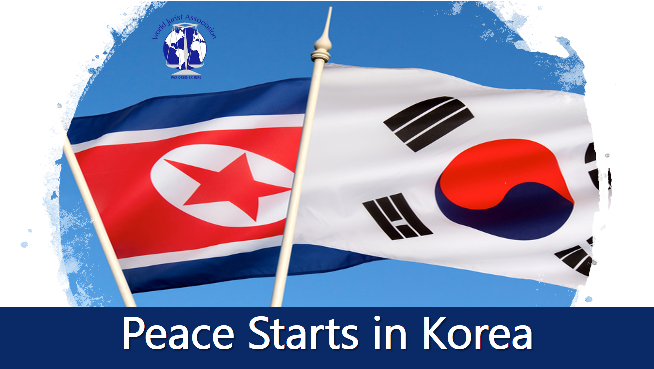Peace is a word we are familiar with and use often in our daily speech. Peace in the home, social, and between nations; it is daily in the media, used frequently in our speech. A college professor in the Catholic Peace Weekly treats the issue of peace between the North and South.
By using the word peace, it often takes on a kind of socially recognized signal that we want to live at peace with other groups with whom we disagree.
What does peace mean to us, and how much effort should we make to achieve the peace we seek? Peace can be defined in many different ways, the goals and results of efforts will differ according to the ways peace is perceived.
According to Norwegian sociologist Johan Galtung, peace can be divided into passive peace and active peace, and many phases of peace are placed on the continuum between passive and active peace. Passive peace means to manage and maintain the conflict phase so that physical conflicts do not occur, while active peace means maximizing measures to prevent disputes in peacebuilding and working to minimize the areas of conflict.
Where is the peace we want now? If managing the relationship with North Korea so conflicts do not arise this would be passive peace. On the other hand, on the Korean peninsula, it is also possible to emphasize active peace that supports North Korea's development and maximizes the possibility of cooperation such as mutual visits with North Korea as a core value of South Korea's policy. We may be in constant discord between passive peace and active peace, and continue to move back and forth between them depending on the provocations and threats of the North.
When we talk about peace, usually we are stuck in passive peace mode, and disputes with North Korea on denuclearization are constant. We don't want any harm coming to the South and always on the defensive. North Korea likewise is at present on the passive peace mode and it will be difficult for the North to recognize the South as a true partner in transforming the current deadlock on the peninsula to an active peace phase.
If we do not go beyond the passive peace and remain only on the talking stage we remain an obstacle to active peace. Now, the Korean Peninsula is full of dark clouds due to denuclearization and sanctions on North Korea. If we help North Korea to develop and look forward to an active peace and accept the help of international organizations that are in sympathy we will have some variables that could change the situation on the peninsula.
Active peace should be our peace policy towards North Korea. The way to break the tense situation between conflict and active peace is to maximize active intervention so that the passive peace can be transformed into active peace, and not remain at the level of passive management. The greatest enemy to peace always exists during the time of peace.

No comments:
Post a Comment